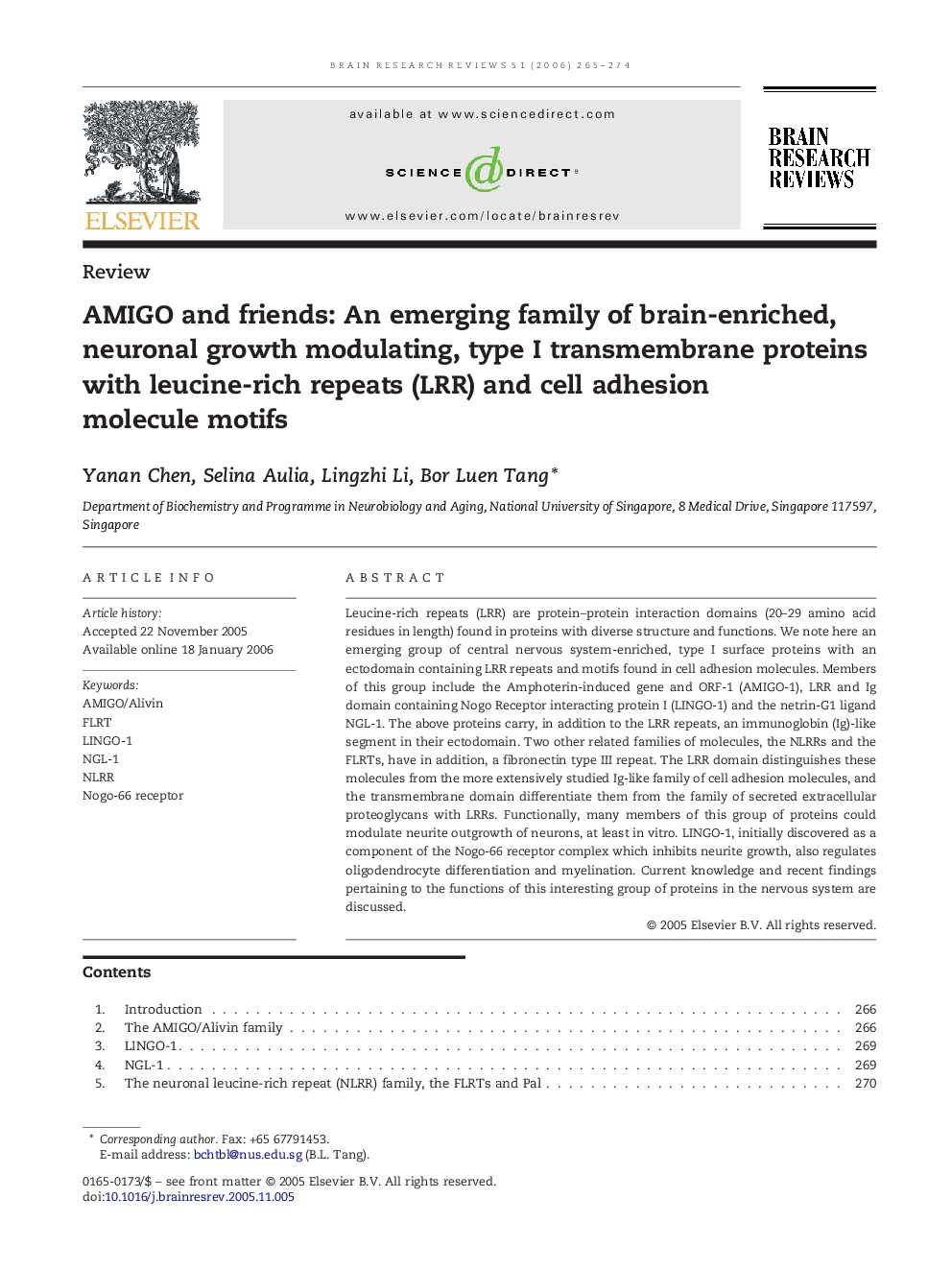| Article ID | Journal | Published Year | Pages | File Type |
|---|---|---|---|---|
| 4334111 | Brain Research Reviews | 2006 | 10 Pages |
Leucine-rich repeats (LRR) are protein–protein interaction domains (20–29 amino acid residues in length) found in proteins with diverse structure and functions. We note here an emerging group of central nervous system-enriched, type I surface proteins with an ectodomain containing LRR repeats and motifs found in cell adhesion molecules. Members of this group include the Amphoterin-induced gene and ORF-1 (AMIGO-1), LRR and Ig domain containing Nogo Receptor interacting protein I (LINGO-1) and the netrin-G1 ligand NGL-1. The above proteins carry, in addition to the LRR repeats, an immunoglobin (Ig)-like segment in their ectodomain. Two other related families of molecules, the NLRRs and the FLRTs, have in addition, a fibronectin type III repeat. The LRR domain distinguishes these molecules from the more extensively studied Ig-like family of cell adhesion molecules, and the transmembrane domain differentiate them from the family of secreted extracellular proteoglycans with LRRs. Functionally, many members of this group of proteins could modulate neurite outgrowth of neurons, at least in vitro. LINGO-1, initially discovered as a component of the Nogo-66 receptor complex which inhibits neurite growth, also regulates oligodendrocyte differentiation and myelination. Current knowledge and recent findings pertaining to the functions of this interesting group of proteins in the nervous system are discussed.
